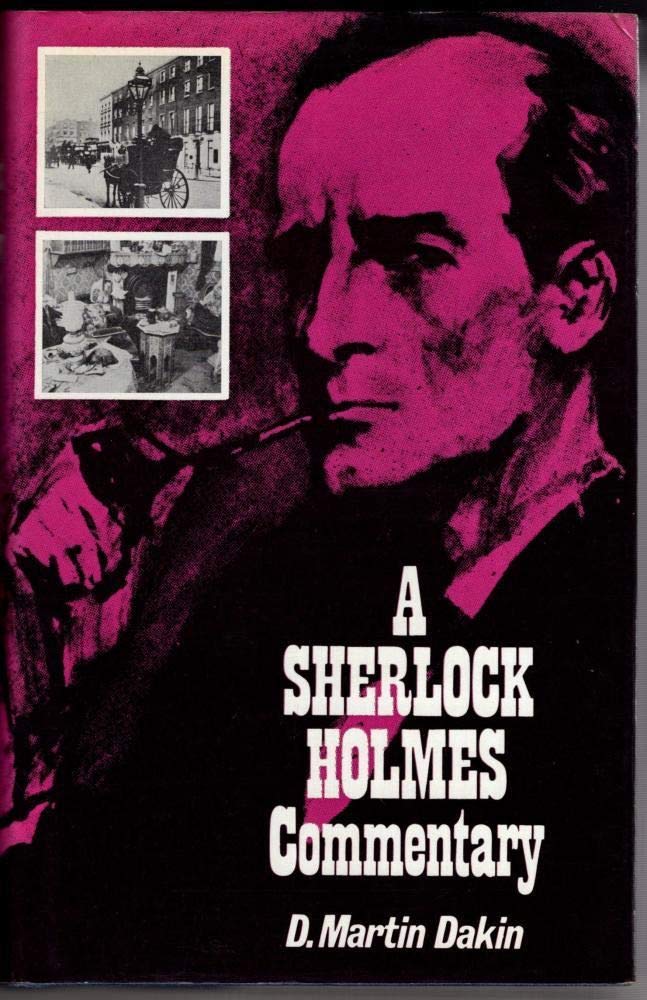
David Martin Dakin’s 1972 book, A Sherlock Holmes Commentary, critically examines Arthur Conan Doyle’s famous detective stories, exploring their content, themes, and inconsistencies. Dakin, a scholar and a dedicated Sherlockian, analyses each story in the Holmes canon, taking a humorous yet thorough approach that highlights Doyle’s writing’s strengths and quirks.
Following a brief Foreword, each story is discussed in order of their first publication, addressing the date that the adventure is thought to have occurred, followed by essential considerations arising from the story.
Two stories published at the same time as Watson’s reminiscences but not attributed to Sherlock Holmes are covered at the end. Two appendices round off the book – a chronological table and a list of people from the stories with beards and/or moustaches.
Detailed Analysis of Each Story
Dakin reviews every Holmes story in the canon, often focusing on plot structure, character development, and the realism (or lack thereof) in Holmes’ deductions. He also identifies and discusses narrative inconsistencies within the stories, a hallmark of traditional Sherlockian scholarship.
Insights into Conan Doyle’s Methods
Dakin examines Doyle’s storytelling techniques, such as his use of red herrings, recurring themes, and particular settings that create a distinct atmosphere. He also assesses Doyle’s approach to Victorian society and views on justice, often reflected subtly in Holmes’ actions.
Exploration of Character
Dakin delves into Holmes and Watson’s personalities, their relationship, and the evolution of their characters for the stories. He compares the detective to real-life figures of the time and analyzes Watson as a reliable narrator and a somewhat overlooked character in his own right.
Sherlockian Traditions and Canonical Playfulness
Dakin’s commentary is rooted in the Sherlockian tradition of treating Holmes and Watson as real people. He addresses many of Doyle’s puzzles and contradictions, such as the dating of certain cases, conflicting timelines, and “errors” in Watson’s narration, which Sherlockians playfully analyze as part of the Holmes mythos.
Critical but Affectionate Tone
Dakin approaches the stories with respect for Doyle’s genius and a critical eye on the flaws and inconsistencies. His commentary is both scholarly and accessible, making it a valuable resource for fans and researchers alike.
About the Author
My copy of Dakin’s book is signed by the author “With the compliments of the author,” and below that, he quoted Holmes from The Red-Headed League, “ . . . and have even contributed to the literature of the subject.” However, in this case, it is solely the study of tattoos, having noticed the fish tattooed on Jabez Wilson’s wrist and deducing that he had been in China.
Dakin was the first Brain of Britain Series Champion in 1954 and is reported, in addition to his extensive knowledge of Sherlock Holmes, to have been able to quote the chapter and verse number of any verse from the Bible.
He served as a Religious Education teacher at Dagenham County High School, Dagenham, Essex.
He died in 1979, aged 71, four years after signing my copy of his book.